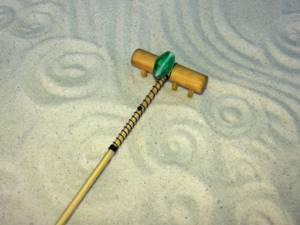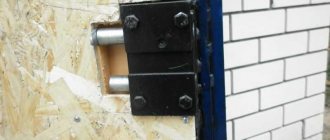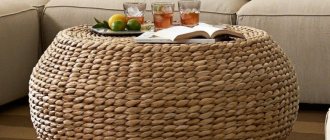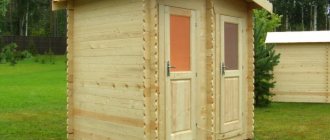What to look for when choosing
There are several types of rakes:
- Classic , which are used as garden tools. They can be divided into straight and fan. The latter are convenient for collecting leaves, but it is almost impossible to work in the beds.
- Tractors , which are used in large fields. They need to be attached to agricultural machinery.
- Horse-mounted , which can be connected to a horse cart or to a walk-behind tractor.
Important! Most often, gardeners use classic rakes, so they will be written about below.
Classic rakes for cottages and gardens
When choosing, you need to pay attention to several factors:
- Design. The spine and teeth can be straight or curved.
- Shape and arrangement of teeth.
- Number of teeth. The standard tool is 8-10, but for working with shrubs and flowers, models with 2-4 teeth are used.
- Shape (straight, twisted, nail, crescent).
- Material. It is better to choose steel products, as they are more wear-resistant.
All this must be taken into account when choosing a tool. You can also find products with long and short stems. Here you need to choose based on the characteristics of use and your own growth.
Wooden rake
The good thing about rakes made from wood is that they are light in weight.

That is why they are mainly used as rakes for hay and dry leaves. Hay does not get stuck on their teeth.

Tips and tricks when choosing
There are several recommendations that will help you make the right choice in favor of the tool that will be convenient to work with.
Important! Considering that a rake is a universal tool that can be used in various jobs, it is worth considering buying a transforming model. It is more expensive, but can replace several tools at once. In the long run, you will be able to save a lot of money.
There are several things that make work more convenient:
- ergonomic handle shape;
- the presence of an additional crossbar on the working surface;
- D-shaped handle;
- rubber pads on the handle.
It is recommended to check that no parts are loose, everything should be held together as a whole. This is the only way to achieve the desired result during work. If the handle is made of wood, then it should be smooth. Knots and the presence of jagged edges are a sign of defective material.
Video - Do-it-yourself garden rake
Learning to choose a fan rake
This is the rake we chose this time. Next in line is the purchase of a plate fan.
Fan rakes are quite popular gardening tools. Once upon a time, flattered by the stories of experienced summer residents, I bought these, and the first ones I came across, but I was very dissatisfied with this tool. So she threw him into the barn.
Time has passed. Experience (alas, someone else’s) has shown that a fan rake is not such a bad thing and a very necessary thing in the garden. But, unfortunately, the previous purchase was irretrievably lost, and I had to go to the store again to buy a fan rake. It was here that a series of discoveries awaited me.
“They’re kind of small,” I complained, looking at the only type of this instrument currently available in the store. – My previous ones were larger, and soft and flexible. And this rake is tough.
– So it depends for what purpose you buy a fan rake. They are completely different both in structure and size. And although the main purpose of fan rakes is to remove garbage, they are intended for different jobs,” said Tatyana Kolach, sales consultant at a specialized store for gardeners.
Types of "fan"
It turns out that there are several types of fan rakes: wire, plate and plastic fan rakes.
*Wire rakes are more rigid, their teeth consist of thick wire, and the ends are bent at right angles. This helps when removing debris not to damage already sprouted plants.
But they are not intended for collecting foliage, as they will string leaves on themselves. After several movements, the tips of the fan are covered with a dense “skirt”.
When cleaning a mowed lawn, excessively stiff and sharp tips can damage the lawn. The surface of the earth will be scratched, the grass will suffer as a result or will be completely torn out by the roots.
*Plate rakes are based on a series of narrow curved plates. They spring well and do an excellent job on uneven surfaces.
They do not get tangled in thick grass, the foliage does not get strung together and is swept away in whole bales. Garbage collection is fast and targeted. The pliability of the material does not require excessive pressure, but in any case, the fan does not deform and it always returns to its previous position.
Due to its flexibility, the blade fan cannot cope with tall, dense grass. He is unable to collect small twigs and twigs. It is useless for collecting fallen apples, plums and other fruits; the tines will sag and leave all solid objects on the ground.
*Plastic rakes are seriously inferior to the previous ones in terms of their characteristics and strength.
Plastic is not afraid of moisture and rust. But such fan attachments lack elasticity and are more fragile than iron ones. With strong pressure and vigorous use they can break. Most often, the bushing - the connecting point with the handle - suffers. This problem makes them short-lived.
How to choose a fan rake
“If you have decided on the type of fan, then when purchasing you need to check the flexibility - place it on the floor or counter and press on the work surface,” continues Tatyana. – Make sure there are no cracks. On metal, check the integrity of the protective coating.
The best option would be a rake with maximum surface coverage. They consist of 22 teeth and are always sold with a handle. The handle can be chosen telescopic, aluminum or plastic.
If you have a small area and you rarely use rakes, then buy plastic ones, they are much cheaper. In large areas where there are many garden trees and shrubs, metal models are needed. Caring for them is quite simple: treat them with oil before winter storage and the rake will serve for a long time.
The cost of fan rakes can vary depending on the number of teeth, the material, their overall appearance and manufacturer.
A little history
Japan is considered the birthplace of fan rakes. Initially, they lacked a transverse ridge - the teeth diverged from the attachment point. Then, for convenience, the rake began to be modified.
Photo by the author
How to choose a reliable rake for your dacha and garden
When choosing a rake for your dacha or garden, you can buy classic models. They are great for working in the garden. Today, many manufacturers sell products without cuttings. In this case, plastic cuttings with a replaceable tip can be used. This is convenient because you can get a number of additional benefits:
- sliding handle;
- change nozzles as needed;
- Light weight, which requires less effort to complete the job.
Important! Plastic cuttings are short-lived, so most users choose wooden cuttings. It is not recommended to change the attachments on them, because in this case the rakes become more mobile. This has a negative impact on work.
Thus, the above models are quite popular. They are easy to use and can be used to perform the necessary work. Of course, there are many other rakes on the market, so it is important to study the offers immediately before purchasing.
Video - How to choose a rake, features and varieties
Leaf rake
If you do not promptly remove fallen and rotted leaves from the lawn, over time they will begin to decompose and ruin its surface and structure. How? First of all, leaves scattered across the lawn inhibit the growth of grass, creating unsightly bald patches in the lawn. Secondly, during the decomposition process they release harmful substances that have a bad effect on grass growth. This is why it is recommended to regularly remove leaves from your lawn, especially in the fall when the most leaves fall.
To remove leaves from the lawn, you will need a special rake, which differs from ordinary ones in that it has very long and flexible teeth. This is extremely important because this design will allow you to collect leaves from a specific area with just one swipe.
When purchasing a leaf rake, pay attention to the width of the working element. It must be at least 40 cm. Otherwise, working with such a tool will be long and tedious, especially in a large garden. The second important factor that you should pay attention to when choosing a rake is its weight. The lighter the tool weighs, the easier it will be to work with.
What is the best leaf rake (for leaves) to buy? Prices
There are dozens of different models of leaf rakes sold in stores. So which ones are better to choose for your home (dacha)? The most effective and popular model among summer residents today is a fan-shaped rake, which is distinguished by a special shape that ensures the most effective collection of leaves even on difficult and uneven terrain.
It is also important to consider the material the leaf rake is made from. Not only the durability, but also the functionality of the tool depends on the material. For example:
- Plastic leaf rakes are the simplest and cheapest tools that can be bought for only 100-150 rubles. As a rule, cheap plastic rakes are usually equipped with a small number of teeth (20 to 25), the flexibility of which often leaves much to be desired. The plastic itself is not particularly durable, so this type of rake is only recommended for small gardens;
- PBT Leaf Rakes – In many stores you can find rakes made from special PBT plastic. It is stronger and more durable than conventional plastic, and PBT rakes are more resistant to any mechanical damage, and they perform their job more accurately. However, the price of such instruments is already an order of magnitude higher - from 700 rubles;
- Wire Leaf Rakes – These tools are a little more durable than plastic rakes, but they are also more flexible, which definitely makes them easier to work with. Wire rakes often have a special metal block that protects the teeth. The cost of wire rakes is small and ranges from 250 to 600 rubles;
- Metal leaf rakes are by far the most reliable rakes and are recommended to be purchased primarily for large areas. The teeth in such tools are usually made of galvanized steel, making them resistant to various types of damage and moisture. The flexibility of the teeth also makes the job much more enjoyable. We recommend paying attention to an adjustable steel leaf rake - you can adjust the gap between the teeth, as well as their width.
Leaf rake (for leaves). Manufacturers
When purchasing this type of rake, we recommend choosing products from reputable manufacturers. Rakes from the Gardena and Fiskars brands have proven themselves well.
In addition to a wide selection of materials, the products of these companies are distinguished by the possibility of purchasing tools of different sizes and various functionality. Thus, you can easily select and buy large leaf rakes designed for large gardens, or select small rake models with fewer teeth.
Voting for the best rake for a summer house and garden
Which rake would you choose or recommend?
GARDENA 3099-30
100.00% ( 1 )
FISKARS Solid 1026724
0.00% ( 0 )
PALISAD 61767 sliding without handle
0.00% ( 0 )
GARDENA 3103-20 without stem
0.00% ( 0 )
GARDENA 3004-20
0.00% ( 0 )
GARDENA 3179-20 without stem
0.00% ( 0 )
GARDENA 3381-20 without stem
0.00% ( 0 )
FISKARS Light 1019608
0.00% ( 0 )
FISKARS Solid 1016036
0.00% ( 0 )
FISKARS Solid 1014915 without handle
0.00% ( 0 )
FISKARS Solid 1014917 without handle
0.00% ( 0 )
FISKARS Light 1019606
0.00% ( 0 )











